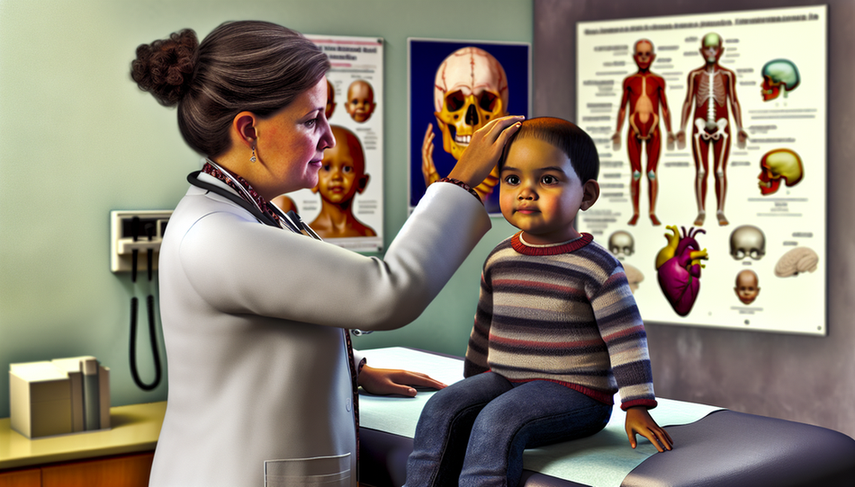Apert Syndrome: Identifying Craniosynostosis and Differentiating from Crouzon Syndrome for Effective Corrective Surgery

The Apert syndrome is a rare genetic condition characterized by premature suture fusion of cranial structures, known as craniosynostosis, along with other skeletal anomalies. This syndrome is part of a group of disorders that also includes Crouzon syndrome, both caused by mutations in the fibroblast growth factor receptor 2 (FGFR2) gene. Although they share some clinical features, it is crucial to differentiate them for appropriate management and planning of corrective surgery.
Identification and Differentiation
Craniosynostosis in Apert syndrome primarily manifests as a premature fusion of the coronal sutures, resulting in a characteristic head shape and facial dysmorphisms. Additionally, patients with Apert syndrome exhibit syndactyly of the hands and feet, which is not common in Crouzon syndrome. In contrast, Crouzon syndrome is characterized by ocular proptosis and an absence of hand and foot anomalies, facilitating clinical differentiation [1](https://pubs.rsna.org/doi/10.1148/rg.2017170017).
The differential diagnosis relies on imaging studies and genetic testing. Mutations in FGFR2 are common in both syndromes, but clinical manifestations vary due to differences in receptor activation and cellular signaling [2](https://link.springer.com/article/10.1007/s13353-017-0423-4). Computed tomography evaluation is essential for identifying suture fusion and planning surgical intervention [3](https://pubmed.ncbi.nlm.nih.gov/15222651).
Conclusions
Management of Apert syndrome and its differentiation from Crouzon syndrome is fundamental for the prognosis and quality of life of patients. Early and accurate identification of craniosynostosis and associated features allows for timely surgical intervention, improving functional and aesthetic outcomes. Understanding the genetic and clinical differences between these syndromes is crucial for healthcare professionals treating these patients [4](https://journals.lww.com/00001665-201003000-00041).
Referencias
- [1] Imaging of Skeletal Disorders Caused by Fibroblast Growth Factor Receptor Gene Mutations
- [2] Craniosynostosis as a clinical and diagnostic problem: molecular pathology and genetic counseling
- [3] Craniosynostosis
- [4] Dura in the pathogenesis of syndromic craniosynostosis: fibroblast growth factor receptor 2 mutations in dural cells promote osteogenic proliferation and differentiation of osteoblasts
Created 13/1/2025
